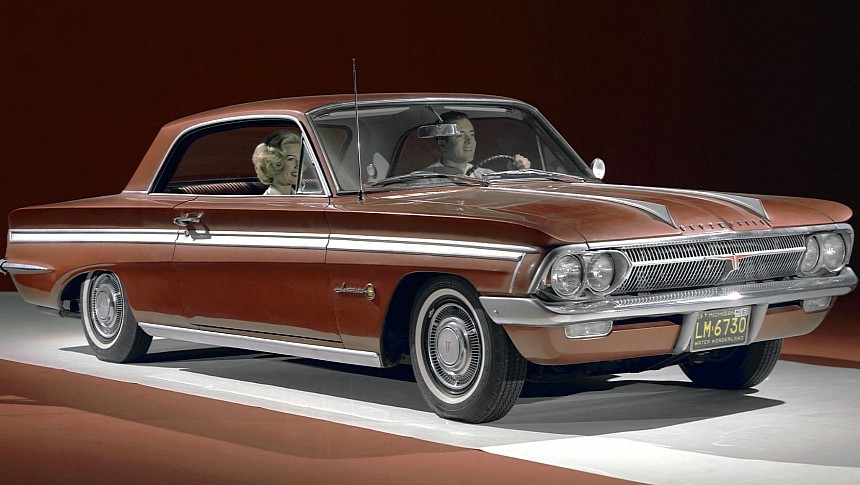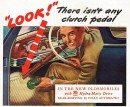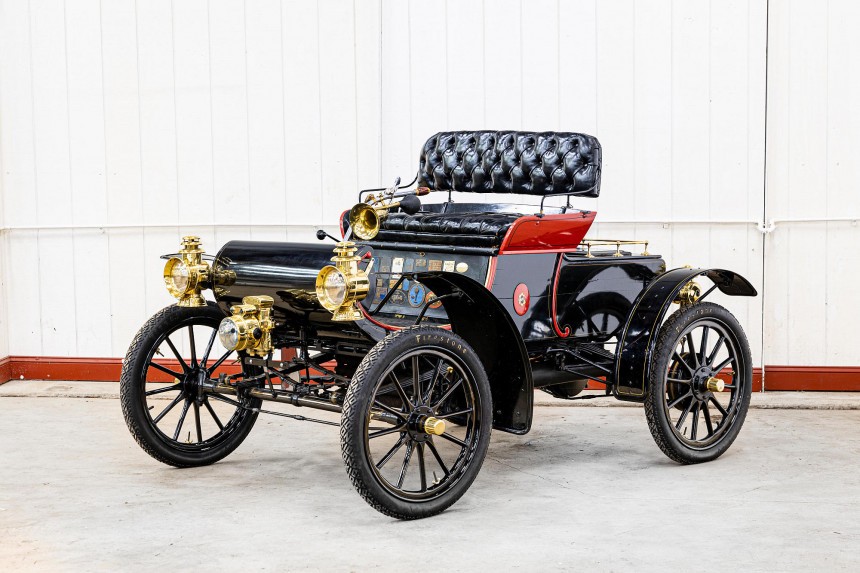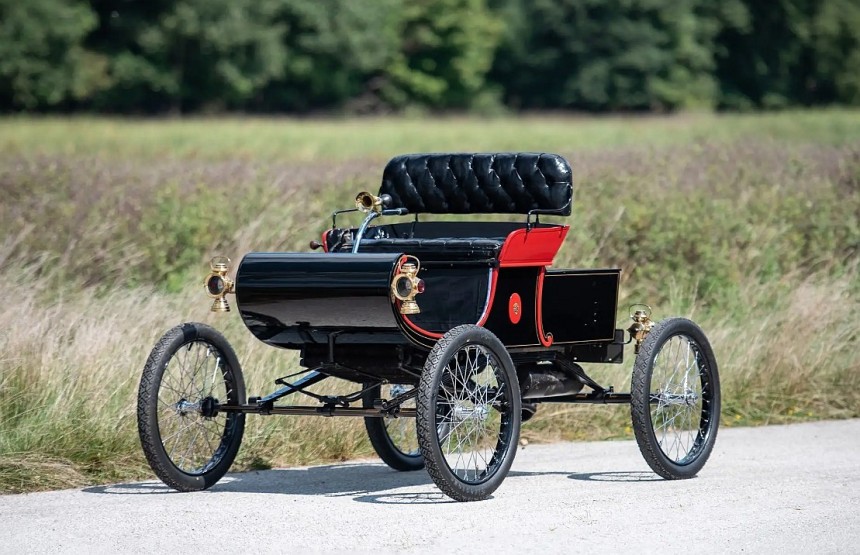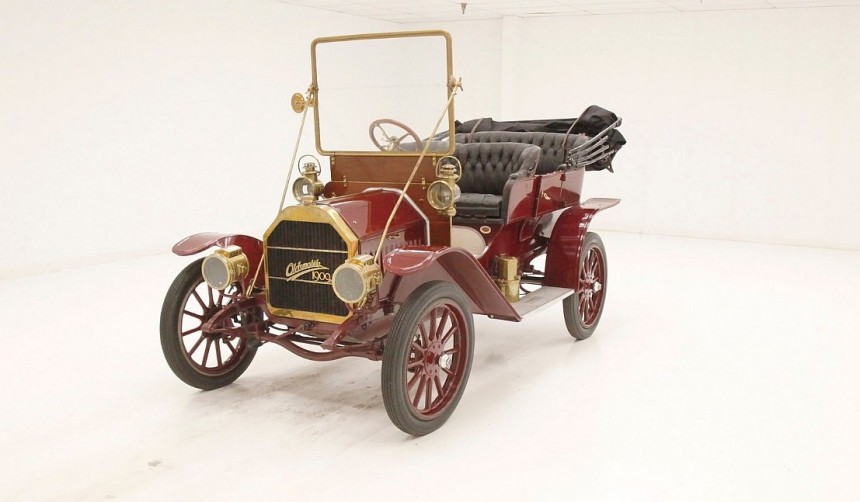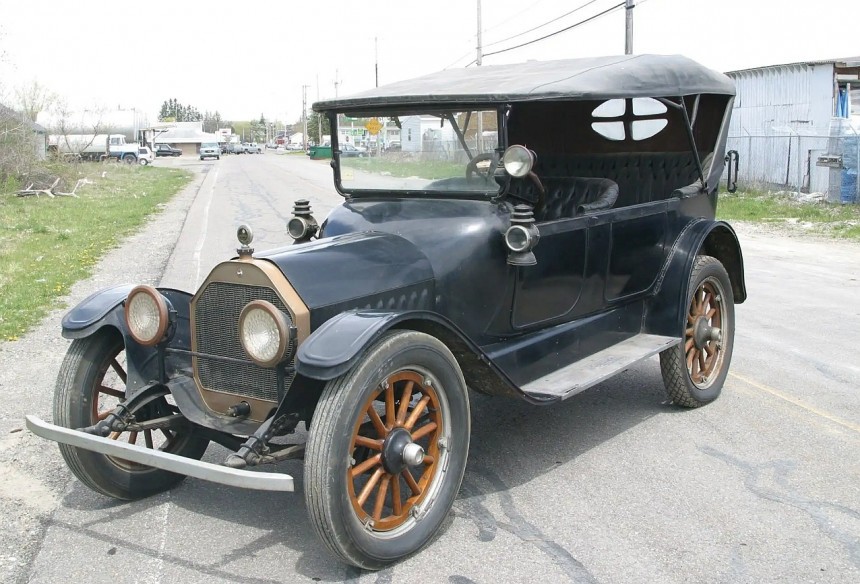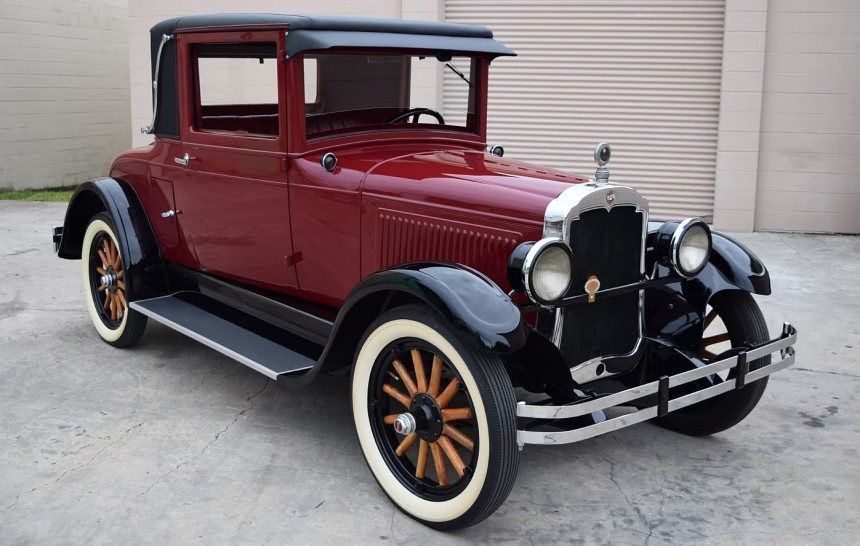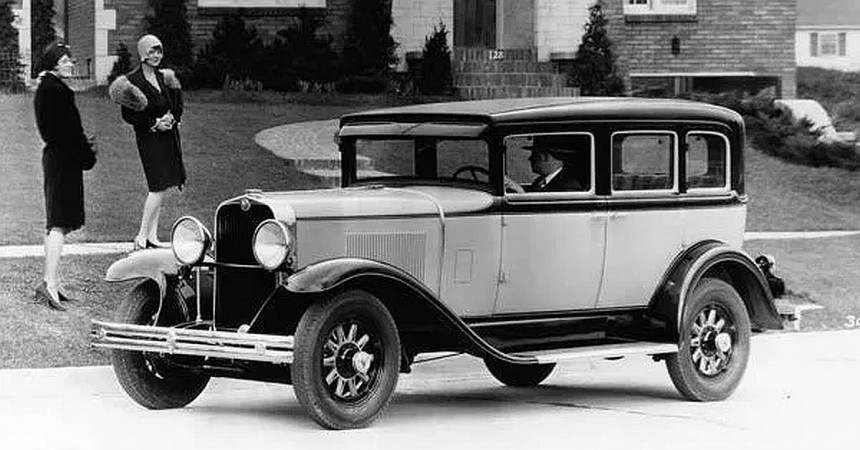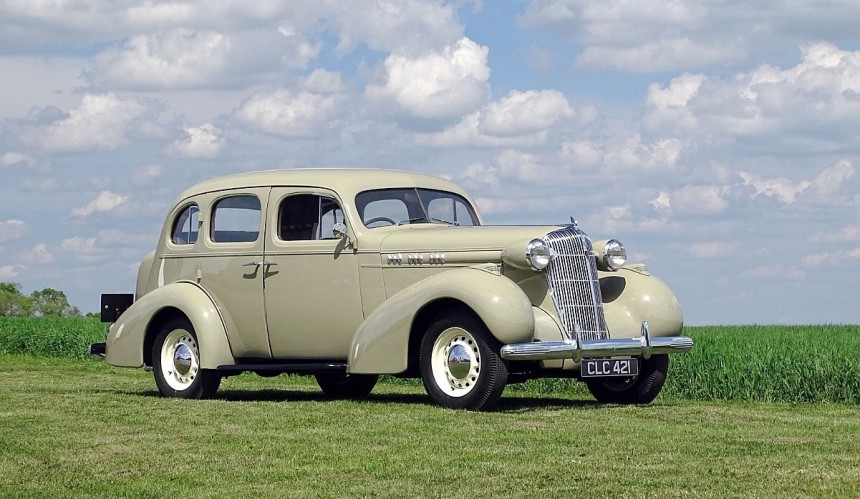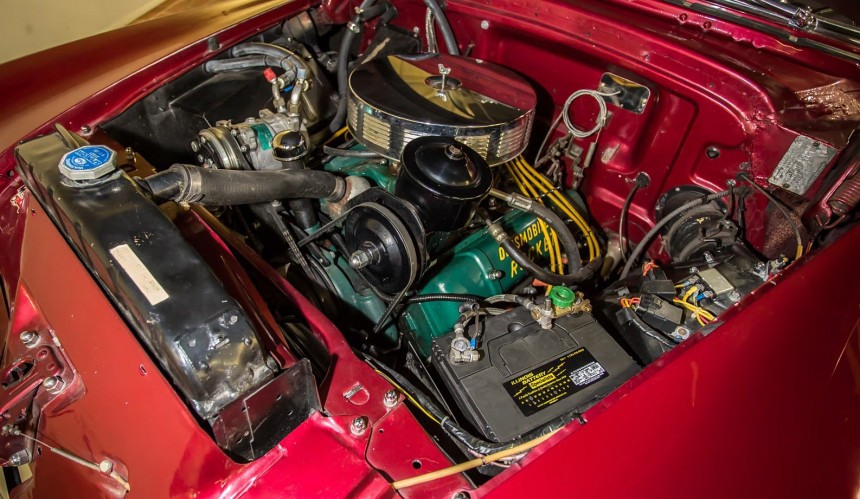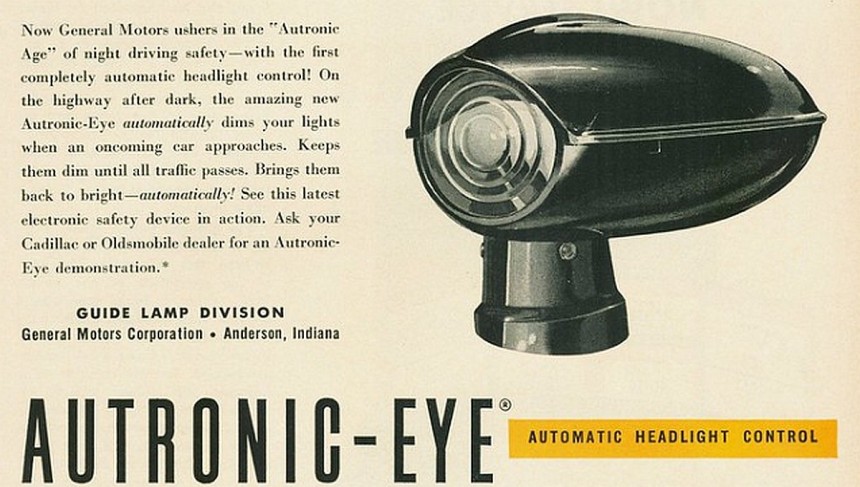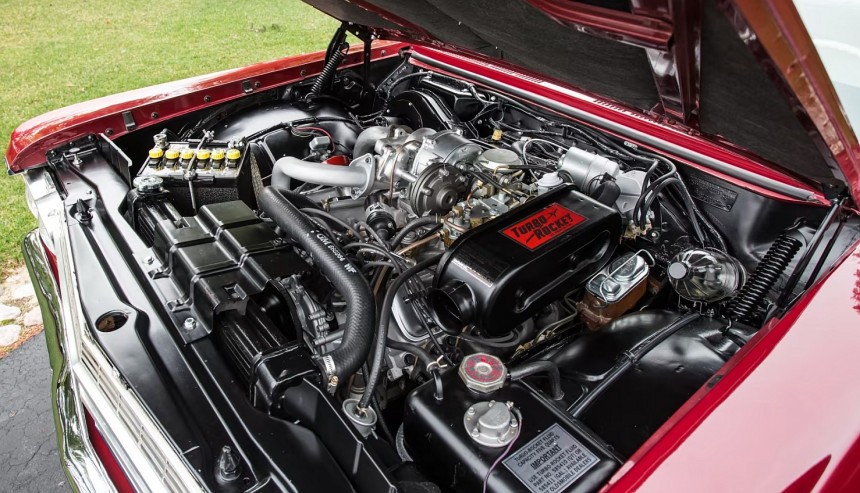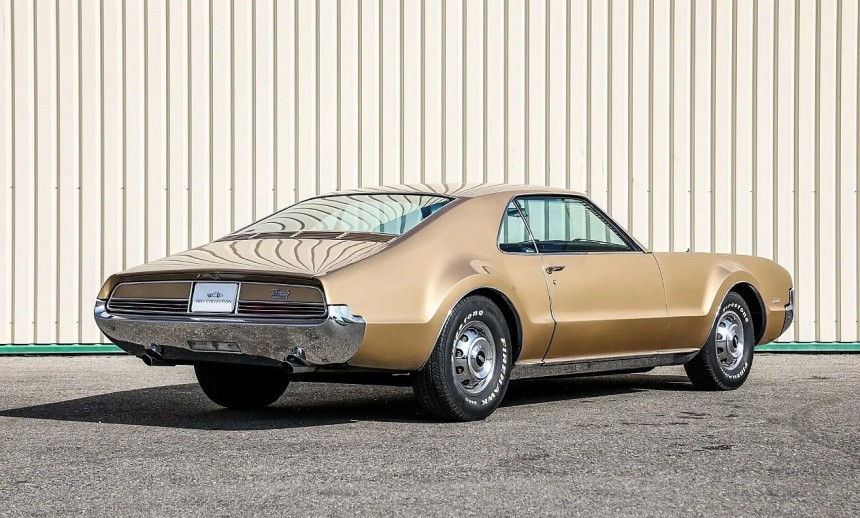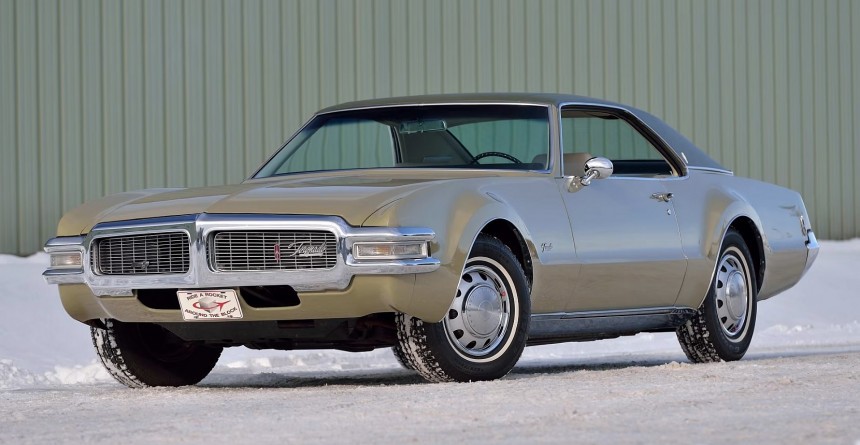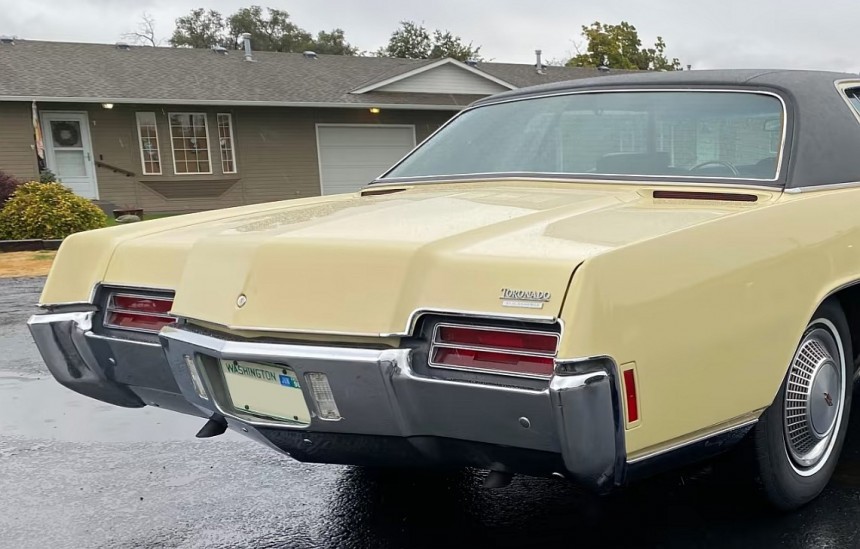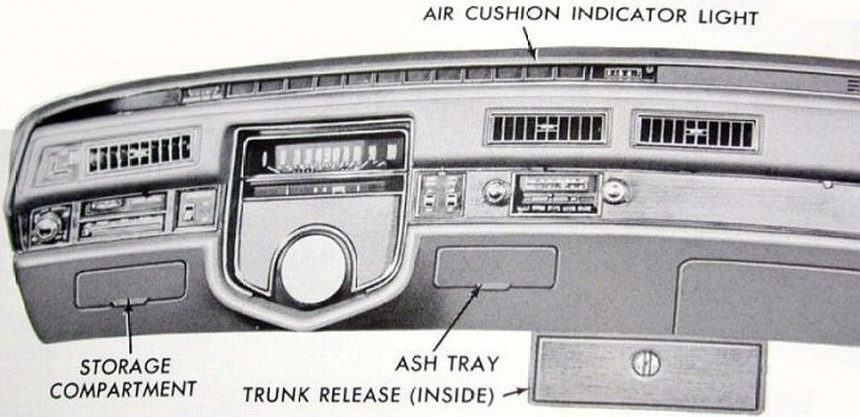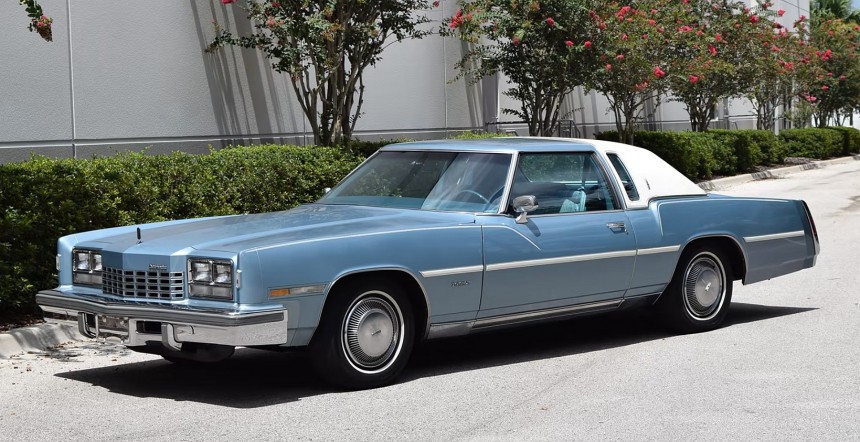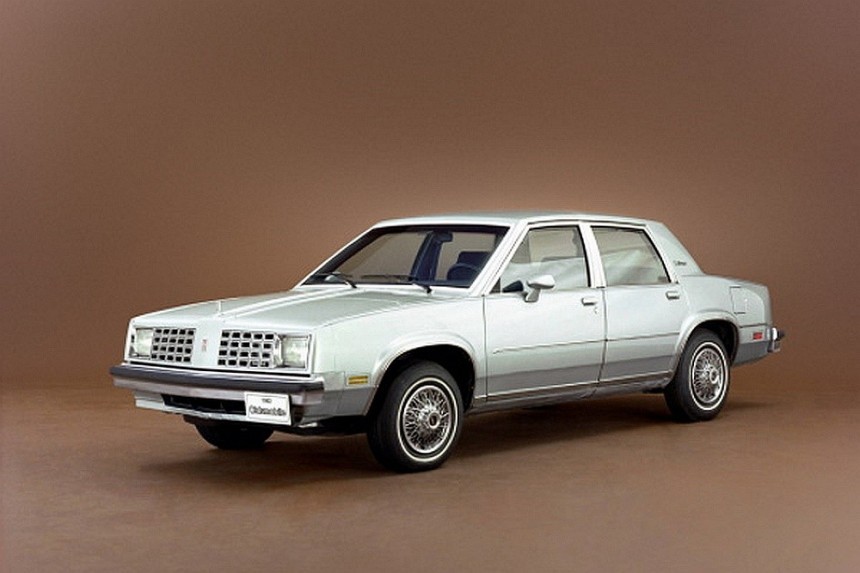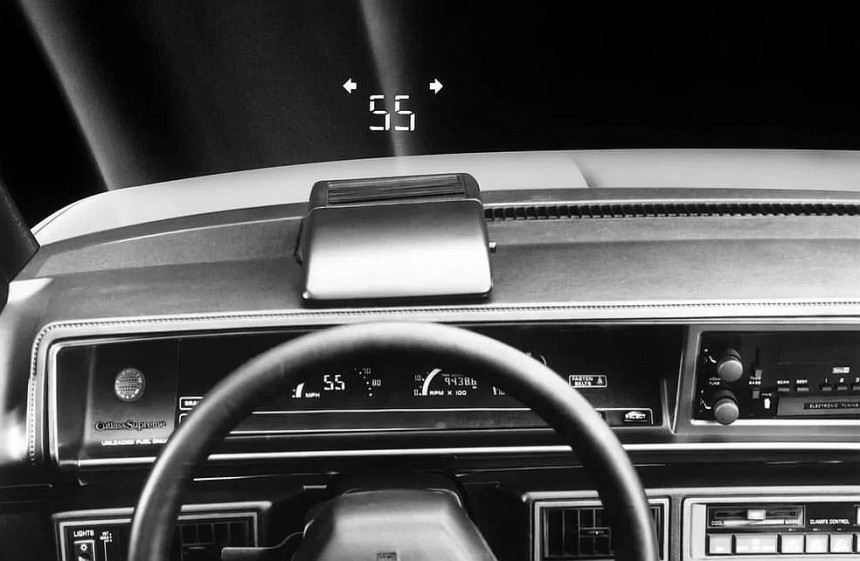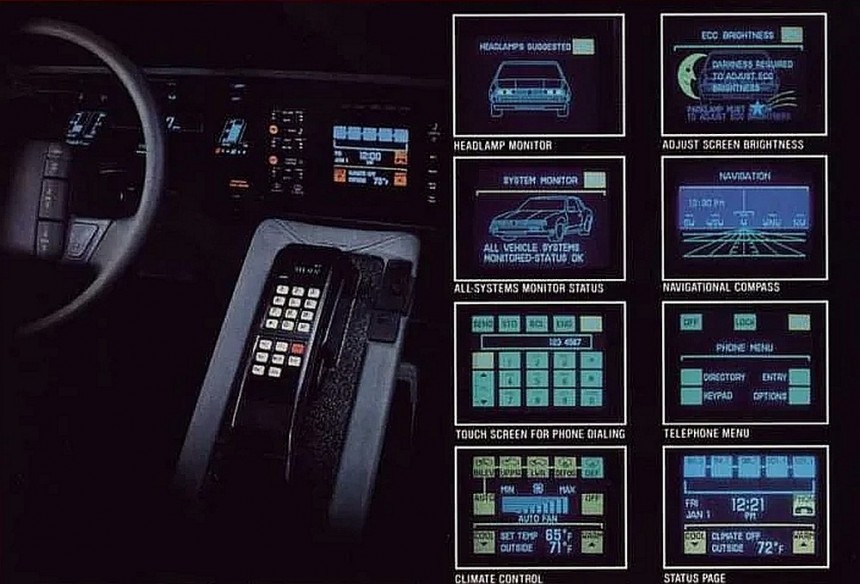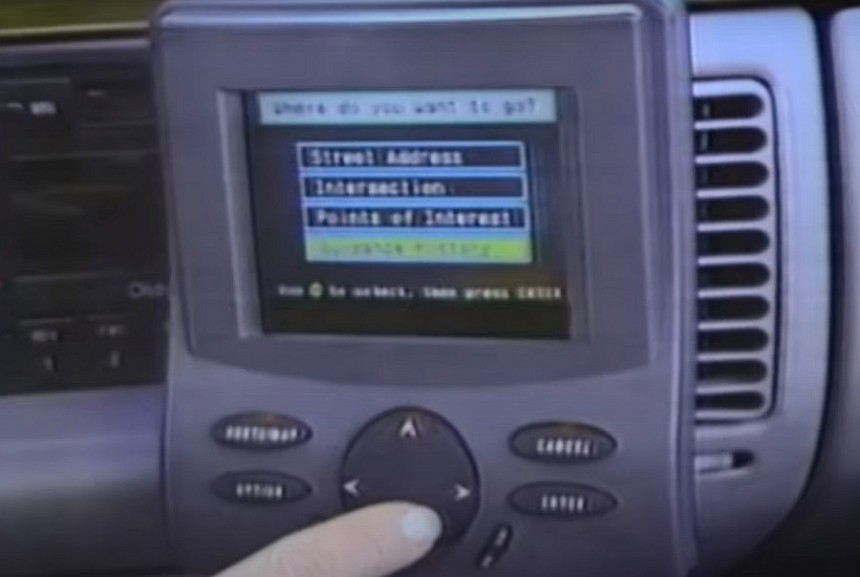Originally established as Olds Motor Vehicle Company by Ransom E. Olds in 1897, Oldsmobile was, for most of its existence, GM's entry-level premium brand. Purchased by General Motors in 1908, Oldsmobile slotted above Chevrolet and Pontiac and below Buick and Cadillac.
The division was noted for several innovative technologies and designs. It was the first automaker to offer a fully automatic transmission, it produced the fastest cars of the early 1950s thanks to the Rocket V8 engine and built the world's first turbocharged production car in the 1960s.
Oldsmobile became one of America's best-selling brands in the 1970s and 1980s, with sales peaking at almost 1.1 million units in 1985. But as premium European and Japanese cars arrived on US soil, Oldsmobile sales declined in the 1990s.
General Motors discontinued the division in 2004. At the time, it was the oldest surviving American car brand and one of the oldest in the world. Oldsmobile produced over 35 million vehicles and introduced several industry-first features during its 107-year existence. Here's how it revolutionized the automotive market.
A trivial feature in modern automobiles, the speedometer was initially patented by Croatian inventor Josip Belusic. A rather crude device that included a pointer and a magnet, the first speedometer was showcased in Paris in 1889. An improved version, similar to the modern speedometer, was introduced by Oldsmobile in 1901.
The gauge was offered in the Model R, one of the company's first automobiles. Also known as the Curved Dash, the Model R was built from 1901 to 1907 and is credited as being the first mass-produced automobile. Oldsmobile assembled 425 units in 1901 and 2,500 examples the following year. In all, the Curved Dash moved 19,000 cars before the Ford Model T arrived in 1908.
Third-party suppliers have been an integral part of the automotive industry since the early days. And it's one of the reasons the industry developed rapidly, and it can now produce millions of vehicles per year. But it all started accidentally following a fire at the Oldsmobile factory.
In March 1901, Olds had an entire line of new models ready for production, but a fire burned the factory to the ground, destroying nearly all of the prototypes. To keep production going while the factory was being rebuilt, the company turned to subcontractors.
Ransom E. Olds hired Henry M. Leland for engine production and the Dodge Brothers for other components. Leland went on to establish Cadillac in 1902.
Founded in 1908 by William C. Durant, Charles Mott, and Frederic Smith, General Motors purchased its first automaker, Buick, on October 1. About a month later, GM acquired Oldsmobile as its second brand. In 1908, Durant kickstarted the platform-sharing strategy that became GM's most notable business model.
The world's first badge-engineered automobile was born when Oldsmobile was given access to the underpinnings of the Buick Model B. The latter had been in production since 1904. The car was launched as the Oldsmobile Series 20 and remained in production for only one model year. But while it shared the chassis with the Model B, the Series 20 had a different engine.
Instead of adopting Buick's two-cylinder boxer engine, the world's first production overhead valve mill, Oldsmobile went with its own 2.7-liter four-cylinder lump. The Series 20 spawned 5,325 units before it was discontinued.
Ah, the windshield. The piece of laminated safety glass keeping us safe from the elements and debris. Originally made from window-pane glass, the windscreen first appeared on an automobile in 1904.
They usually included two sheets of glass with an upper pane that could be folded down when it got too dirty to see through. They weren't widespread, though, as most vehicles were still motorized horse carriages at the time. That's why most drivers wore goggles.
That began to change in 1915 when Oldsmobile started offering windshields as standard equipment on the Six and the newly-introduced Model 43. Most US carmakers adopted the feature soon after.
Have you noticed that American cars from the 1910s have next to no chrome compared to those built in the late 1920s? Well, that's because the chrome electroplating process wasn't discovered until 1924. Two years later, Oldsmobile began using chrome plating for radiators, headlamps, and bumpers, becoming the first automaker to do so.
Some car companies actually used nickel electroplating before that, but the really shiny stuff arrived in showrooms on the Oldsmobile Model 30. And as we know, it all went wild in the 1950s with massive grilles, bumpers, and fins polished to a mirror shine.
The V8 engine can be traced back to 1904, but the first mass-produced automotive version did not arrive until 1914 when Cadillac introduced the L-head. Three years later, Chevrolet built the first V8 with overhead valves. In 1924, Cadillac innovated once again with the first American V8 to use a cross-plane crankshaft.
It took the US automotive industry a few more years to develop the first monobloc V8. This design, where each cylinder bank is made from a single piece of cast metal, is usually associated with Ford's Flathead V8, launched in 1932. However, the first monobloc V8 was, in fact, created by Oldsmobile in 1929.
A 260-cubic-inch (4.3-liter) powerplant good for 81 horses, the mill did not power Oldsmobile vehicles. It was used in a short-lived sister brand called Viking. Introduced alongside Pontiac, Marquette, and LaSalle as part of GM's "companion make program," Viking produced luxury cars until 1931, when the division was shut down.
Yet another car feature we take for granted nowadays, the steel roof needs a few decades to become a thing. Having welcomed V8 engines, mass production, and enhanced safety features, the automotive industry relied on tops made of wood and fabric well into the 1930s. Not only were they time-consuming to manufacture, but they didn't add much to the structural rigidity of the body either.
That changed in the early years of the decade when a company from East Chicago created a rolling mill wide enough to produce roof stampings in one piece. GM was the first of the Big Three to adopt the technology and rolled out the first production car with an all-steel roof in 1935. It was called the Turret Top and debuted on an Oldsmobile, but it almost immediately found its way on Chevrolet and Pontiac models.
Fitted in more than 95% of brand-new American automobiles nowadays, the automatic transmission can be traced back to the 1904 Sturtevant "horseless carriage gearbox." The first patent was approved in 1923, while the REO Motor Car Company built the first semi-automatic transmission in 1933.
Oldsmobile joined in with the Automatic Safety Transmission in 1937, which eventually evolved into the iconic Hydra-Matic gearbox. Developed by Olds and Cadillac, the Hydra-Matic debuted in October 1939 as an option on the Oldsmobile Series 60 and the Series 70.
The first mass-produced fully automatic transmission became available in Cadillac vehicles in 1941. Why did it take so long for the luxury company to adopt the technology? Well, GM wanted to protect the brand in case of a market failure of the new gearbox. It wasn't the case, though, as the Hydra-Matic remained in production for almost 30 years.
In 1949, the overhead valve engine design had been around for about 50 years. However, Oldsmobile's Rocket V8 had nothing in common with the single-cylinder OHV engine that bicycle manufacturer Walter Lorenzo Marr built in 1898. It also differed from the 331 series mill Cadillac introduced in 1949.
Featuring hydraulic lifters, an oversquare bore:stroke ratio, a forged crankshaft, aluminum pistons, and a dual-plane intake manifold, the 303-cubic-inch (5.0-liter) V8 debuted with a two-barrel setup and 135 horsepower, 35 more the popular Ford Flathead. In 1952, Olds introduced a four-barrel variant good for 160 horsepower.
The original Rocket powered both the 88 and 98 models from 1949 to 1953. And it's famous for turning the smaller 88 into the car to beat on NASCAR ovals for two seasons in a row. The Rocket 88 is also regarded by some as America's first true muscle car.
Although the 303 was discontinued in 1953, the Rocket V8 soldiered on with numerous updates through 1990. It's among the longest-running American engines ever built.
Also linked to both Oldsmobile and Cadillac, the Autronic Eye arrived in 1952 as the world's first automatic headlamp dimming system. Featuring a phototube mounted on the dashboard, it detected approaching headlights and automatically switched the beams to low until the other lane was clear.
Although the system was overly sensitive and unreliable, it remained in production with substantial improvements until the late 1980s. It was used in various automobiles across all GM brands. The Autronic Eye also found its way into GM's iconic fleet of Futurliners, which were used to parade new technology in the early 1950s.
Essentially a pillarless hardtop version of the Cutlass, the Jetfire came with a 215-cubic-inch (3.5-liter) V8 under the hood. Dubbed Turbo-Rocket, it was actually based on an all-aluminum Buick powerplant of the same size but extensively modified to accommodate a turbocharger. Changes included new pistons, an enhanced ignition coil, a more efficient fuel pump, and a larger radiator.
Paired with a small-diameter turbo developed by Garrett and boasting a 10.25:1 compression ratio, the Turbo-Rocket generated 215 horsepower and 300 pound-feet (410 Nm) of torque—or about 40% more than the naturally aspirated unit, all while without increasing fuel consumption.
Unfortunately, the troublesome injection system and the inappropriate suspension/braking setup prevented the Jetfire from becoming popular, and Oldsmobile discontinued it after the 1963 model year. The Jetfire wasn't GM's only turbo car at the time. Chevrolet also introduced a forced-induction version of the rear-engined Corvair. It arrived only one month after the Jetfire.
Launched in 1965, the Toronado was a personal luxury car developed in response to the Buick Riviera. It shared the latter's E-body platform, but Oldsmobile switched to FWD, a project it had worked on since the late 1950s.
A resounding success due to its stylish design and outstanding ride, the Toronado sold in high numbers in its first year in showrooms. However, deliveries dwindled dramatically in 1967 and continued to drop through 1970. As a result, Olds dropped the grand tourer style design for the second-gen model, opting for a more traditional luxury car look similar to the Cadillac Eldorado.
While seemingly unimportant, this innovation helped reduce production costs and made the respective parts easier to replace. Moreover, it also helped reduce the car's curb weight.
The technology was soon implemented by all automakers, and it's commonplace nowadays, albeit most modern vehicles feature a single light mounted at the top of the rear window.
That same year, GM included the Toronado in the same experiment, making it the first domestic automobile to feature driver- and passenger-side airbags. These cars were equipped with unique steering wheels and knee blockers beneath the driver section of the dashboard. The same airbags were later offered in Buick and Cadillac models.
GM promised the Toronado would average 18.4 miles per gallon, a 10% improvement compared to the 1976 version. However, the 1977 Toronado was also notably lighter and slightly shorter than its predecessor.
GM wasn't the only company experimenting with this technology that year. Both Ford and Chrysler had plans to reduce fuel economy in a similar fashion in 1977. But while Ford delayed the introduction on the Lincoln Continental Mark IV, Chrysler used an analog computer.
The Omega was redesigned in 1975 but remained a rear-wheel-drive car until 1980 when Oldsmobile debuted the third-gen compact. Now based on the Chevy Citation, the Omega switched to front-wheel-drive. It also lost the V8 option, relying on inline-four and V6 units.
Even though it has next to no achievements to brag about and was forgotten as soon as it went into the history books, the Omega was the first automobile to use high-impact molded plastic body components.
GM began developing a head-up display unit in the 1960s, but the project didn't come to fruition until the 1980s, following the acquisition of Hughes Aircraft and the subsequent merger with Delco.
A Hughest-derived HUD was created for automotive use and dropped into 50 Oldsmobile Cutlass Indy Pace Car Editions for the 1988 model year. The unit projected a digital speedometer and turn-signal indicators onto the windshield, paving the way to the head-up displays we get in most premium vehicles nowadays.
Available as a $1,300 option, the Visual Information Center (VIC) controlled the car's radio, CD player, and climate control system. It also gave the driver access to a system monitor and a navigation function. However, the latter only provided access to a compass (there was no GPS in cars at the time).
For an additional $999, buyers could get an in-car telephone compatible with the VIC interface. Introduced on the 1990 Oldsmobile Toronado Trofeo, the Visual Information Center is the predecessor to modern infotainment systems.
Mounted in the center of the dash, in front of the radio, the unit looked like a mini Gameboy. The display swiveled left and right for easy access from both front seats and used GPS linked to an internal database. The system also included turn-by-turn audible instructions.
Developed in cooperation with Hughes Electronics and Electronic Data Systems, it offered satellite navigation for 17 states but lacked live traffic updates. A $2,000 option, it debuted in the 1995 Oldsmobile 88.
Oldsmobile became one of America's best-selling brands in the 1970s and 1980s, with sales peaking at almost 1.1 million units in 1985. But as premium European and Japanese cars arrived on US soil, Oldsmobile sales declined in the 1990s.
General Motors discontinued the division in 2004. At the time, it was the oldest surviving American car brand and one of the oldest in the world. Oldsmobile produced over 35 million vehicles and introduced several industry-first features during its 107-year existence. Here's how it revolutionized the automotive market.
The first speedometer on a production car (1901)
The gauge was offered in the Model R, one of the company's first automobiles. Also known as the Curved Dash, the Model R was built from 1901 to 1907 and is credited as being the first mass-produced automobile. Oldsmobile assembled 425 units in 1901 and 2,500 examples the following year. In all, the Curved Dash moved 19,000 cars before the Ford Model T arrived in 1908.
The first car company to source parts from third-party suppliers (1901)
In March 1901, Olds had an entire line of new models ready for production, but a fire burned the factory to the ground, destroying nearly all of the prototypes. To keep production going while the factory was being rebuilt, the company turned to subcontractors.
Ransom E. Olds hired Henry M. Leland for engine production and the Dodge Brothers for other components. Leland went on to establish Cadillac in 1902.
The first badge-engineered automobile (1909)
The world's first badge-engineered automobile was born when Oldsmobile was given access to the underpinnings of the Buick Model B. The latter had been in production since 1904. The car was launched as the Oldsmobile Series 20 and remained in production for only one model year. But while it shared the chassis with the Model B, the Series 20 had a different engine.
Instead of adopting Buick's two-cylinder boxer engine, the world's first production overhead valve mill, Oldsmobile went with its own 2.7-liter four-cylinder lump. The Series 20 spawned 5,325 units before it was discontinued.
The first standard windshield (1915)
They usually included two sheets of glass with an upper pane that could be folded down when it got too dirty to see through. They weren't widespread, though, as most vehicles were still motorized horse carriages at the time. That's why most drivers wore goggles.
That began to change in 1915 when Oldsmobile started offering windshields as standard equipment on the Six and the newly-introduced Model 43. Most US carmakers adopted the feature soon after.
The first car company to use chrome-plated trim (1926)
Some car companies actually used nickel electroplating before that, but the really shiny stuff arrived in showrooms on the Oldsmobile Model 30. And as we know, it all went wild in the 1950s with massive grilles, bumpers, and fins polished to a mirror shine.
The first Monobloc V8 engine (1929)
It took the US automotive industry a few more years to develop the first monobloc V8. This design, where each cylinder bank is made from a single piece of cast metal, is usually associated with Ford's Flathead V8, launched in 1932. However, the first monobloc V8 was, in fact, created by Oldsmobile in 1929.
A 260-cubic-inch (4.3-liter) powerplant good for 81 horses, the mill did not power Oldsmobile vehicles. It was used in a short-lived sister brand called Viking. Introduced alongside Pontiac, Marquette, and LaSalle as part of GM's "companion make program," Viking produced luxury cars until 1931, when the division was shut down.
The first all-steel roof on a production model (1935)
That changed in the early years of the decade when a company from East Chicago created a rolling mill wide enough to produce roof stampings in one piece. GM was the first of the Big Three to adopt the technology and rolled out the first production car with an all-steel roof in 1935. It was called the Turret Top and debuted on an Oldsmobile, but it almost immediately found its way on Chevrolet and Pontiac models.
The Hydra-Matic - The first production fully automatic transmission (1939)
Oldsmobile joined in with the Automatic Safety Transmission in 1937, which eventually evolved into the iconic Hydra-Matic gearbox. Developed by Olds and Cadillac, the Hydra-Matic debuted in October 1939 as an option on the Oldsmobile Series 60 and the Series 70.
The first mass-produced fully automatic transmission became available in Cadillac vehicles in 1941. Why did it take so long for the luxury company to adopt the technology? Well, GM wanted to protect the brand in case of a market failure of the new gearbox. It wasn't the case, though, as the Hydra-Matic remained in production for almost 30 years.
The Rocket - The first high-compression OHV V8 engine (1949)
Featuring hydraulic lifters, an oversquare bore:stroke ratio, a forged crankshaft, aluminum pistons, and a dual-plane intake manifold, the 303-cubic-inch (5.0-liter) V8 debuted with a two-barrel setup and 135 horsepower, 35 more the popular Ford Flathead. In 1952, Olds introduced a four-barrel variant good for 160 horsepower.
The original Rocket powered both the 88 and 98 models from 1949 to 1953. And it's famous for turning the smaller 88 into the car to beat on NASCAR ovals for two seasons in a row. The Rocket 88 is also regarded by some as America's first true muscle car.
Although the 303 was discontinued in 1953, the Rocket V8 soldiered on with numerous updates through 1990. It's among the longest-running American engines ever built.
Autronic Eye – The first automatic headlight dimming system (1952)
Although the system was overly sensitive and unreliable, it remained in production with substantial improvements until the late 1980s. It was used in various automobiles across all GM brands. The Autronic Eye also found its way into GM's iconic fleet of Futurliners, which were used to parade new technology in the early 1950s.
The world's first turbocharged car (1962)
The monobloc V8 and the high-compression OHV V8 weren't the only engines pioneered by Oldsmobile. The company also designed the first production car with a turbocharged mill. The vehicle in question arrived for the 1962 model year as the F-85 Jetfire.Essentially a pillarless hardtop version of the Cutlass, the Jetfire came with a 215-cubic-inch (3.5-liter) V8 under the hood. Dubbed Turbo-Rocket, it was actually based on an all-aluminum Buick powerplant of the same size but extensively modified to accommodate a turbocharger. Changes included new pistons, an enhanced ignition coil, a more efficient fuel pump, and a larger radiator.
Paired with a small-diameter turbo developed by Garrett and boasting a 10.25:1 compression ratio, the Turbo-Rocket generated 215 horsepower and 300 pound-feet (410 Nm) of torque—or about 40% more than the naturally aspirated unit, all while without increasing fuel consumption.
Unfortunately, the troublesome injection system and the inappropriate suspension/braking setup prevented the Jetfire from becoming popular, and Oldsmobile discontinued it after the 1963 model year. The Jetfire wasn't GM's only turbo car at the time. Chevrolet also introduced a forced-induction version of the rear-engined Corvair. It arrived only one month after the Jetfire.
The first mass-produced front-wheel-drive American car (1966)
Yes, I know, the Toronado wasn't the first American front-wheel-drive car. That trophy goes to the Cord L-29, introduced in 1929, seven years before the more iconic 810/812. But these cars weren't exactly mass-produced. While the L-29 saw daylight in a little more than 5,000 units, the 810/812 was produced in less than 3,000 examples. So, the Toronado was the first mass-produced American automobile with an FWD layout.Launched in 1965, the Toronado was a personal luxury car developed in response to the Buick Riviera. It shared the latter's E-body platform, but Oldsmobile switched to FWD, a project it had worked on since the late 1950s.
A resounding success due to its stylish design and outstanding ride, the Toronado sold in high numbers in its first year in showrooms. However, deliveries dwindled dramatically in 1967 and continued to drop through 1970. As a result, Olds dropped the grand tourer style design for the second-gen model, opting for a more traditional luxury car look similar to the Cadillac Eldorado.
The first carmaker to use chromed ABS plastic exterior trim (1969)
Front-wheel drive wasn't the first piece of technology that Oldsmobile introduced using the Toronado. In 1969, the luxury car became the first automobile fitted with chromed ABS plastic exterior trim.While seemingly unimportant, this innovation helped reduce production costs and made the respective parts easier to replace. Moreover, it also helped reduce the car's curb weight.
The first production car with a high-mounted brake light (1971)
Two years later, the Toronado got yet another innovative feature and became the first production automobile with high-mounted brake lights. Set in wide slots just below the rear window, the additional lights included both stop and signal lamps.The technology was soon implemented by all automakers, and it's commonplace nowadays, albeit most modern vehicles feature a single light mounted at the top of the rear window.
The first American car to offer a driver-side airbag (1974)
General Motors began experimenting with airbags in 1973. Marketed as the Air Cushion Restraint System, it found its way into a few Chevrolet Impala sedans sold as government fleet cars.That same year, GM included the Toronado in the same experiment, making it the first domestic automobile to feature driver- and passenger-side airbags. These cars were equipped with unique steering wheels and knee blockers beneath the driver section of the dashboard. The same airbags were later offered in Buick and Cadillac models.
The first American production car with an onboard digital computer (1977)
And here we are talking about the Toronado again because the 1977 version of the luxury car was the first production US automobile with an onboard digital computer. Regarded as "more sophisticated than some analog computers" available at the time, the microprocessor was used to control spark-plug firings in the engine and thus improve fuel economy.GM promised the Toronado would average 18.4 miles per gallon, a 10% improvement compared to the 1976 version. However, the 1977 Toronado was also notably lighter and slightly shorter than its predecessor.
GM wasn't the only company experimenting with this technology that year. Both Ford and Chrysler had plans to reduce fuel economy in a similar fashion in 1977. But while Ford delayed the introduction on the Lincoln Continental Mark IV, Chrysler used an analog computer.
The first use of high-impact molded plastic body components (1982)
The Omega is one of the lesser-known Oldsmobile models. And for good reason. The nameplate was introduced in 1973 as the company's first compact car. An answer to the 1973 Oil Crisis and the demise of high-performance vehicles, the first-generation Omega shared underpinnings with the Chevrolet Nova.The Omega was redesigned in 1975 but remained a rear-wheel-drive car until 1980 when Oldsmobile debuted the third-gen compact. Now based on the Chevy Citation, the Omega switched to front-wheel-drive. It also lost the V8 option, relying on inline-four and V6 units.
Even though it has next to no achievements to brag about and was forgotten as soon as it went into the history books, the Omega was the first automobile to use high-impact molded plastic body components.
The first production heads-up display system (1988)
The head-up display, also known as HUD, is a relatively common feature on modern cars. The technology can be traced back to the 1940s when it appeared in aircraft. It would take another four decades before the HUD became an automobile production feature.GM began developing a head-up display unit in the 1960s, but the project didn't come to fruition until the 1980s, following the acquisition of Hughes Aircraft and the subsequent merger with Delco.
A Hughest-derived HUD was created for automotive use and dropped into 50 Oldsmobile Cutlass Indy Pace Car Editions for the 1988 model year. The unit projected a digital speedometer and turn-signal indicators onto the windshield, paving the way to the head-up displays we get in most premium vehicles nowadays.
Color touchscreen interface with built-in cellular phone (1990)
A couple of years before Oldsmobile introduced a head-up display, the brand teamed up with Buick to develop a touchscreen interface. The technology debuted on the Toronado and Riviera in 1986. Four years later, Oldsmobile launched an updated color interface with more functions.Available as a $1,300 option, the Visual Information Center (VIC) controlled the car's radio, CD player, and climate control system. It also gave the driver access to a system monitor and a navigation function. However, the latter only provided access to a compass (there was no GPS in cars at the time).
For an additional $999, buyers could get an in-car telephone compatible with the VIC interface. Introduced on the 1990 Oldsmobile Toronado Trofeo, the Visual Information Center is the predecessor to modern infotainment systems.
Guidestar - The first onboard navigation system on a domestic production car (1995)
Oldsmobile launched its final major innovation in 1995, almost 20 years before it was shut down. It's called Guidestar, and it was the first onboard GPS navigation system offered on an American production car.Mounted in the center of the dash, in front of the radio, the unit looked like a mini Gameboy. The display swiveled left and right for easy access from both front seats and used GPS linked to an internal database. The system also included turn-by-turn audible instructions.
Developed in cooperation with Hughes Electronics and Electronic Data Systems, it offered satellite navigation for 17 states but lacked live traffic updates. A $2,000 option, it debuted in the 1995 Oldsmobile 88.
